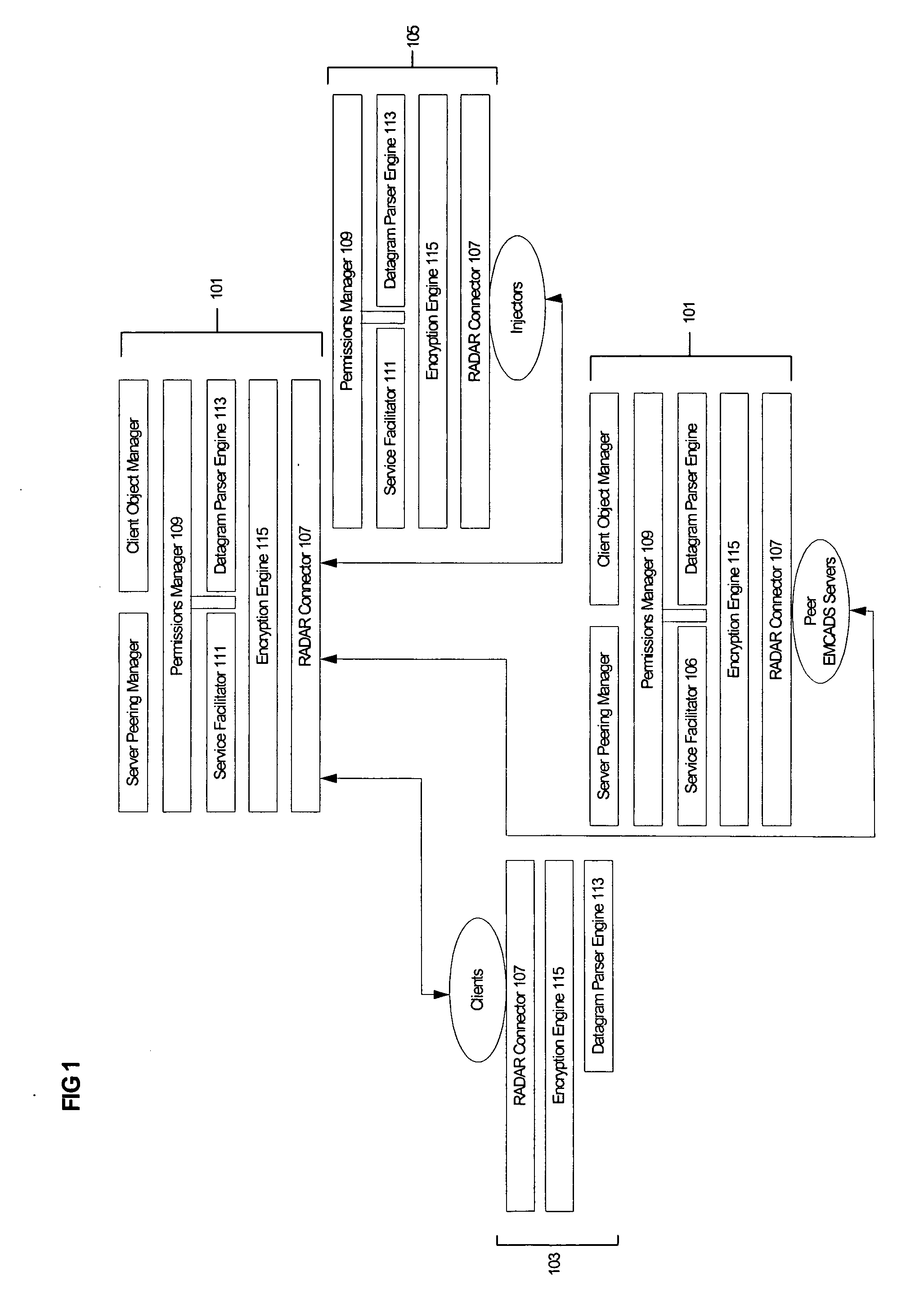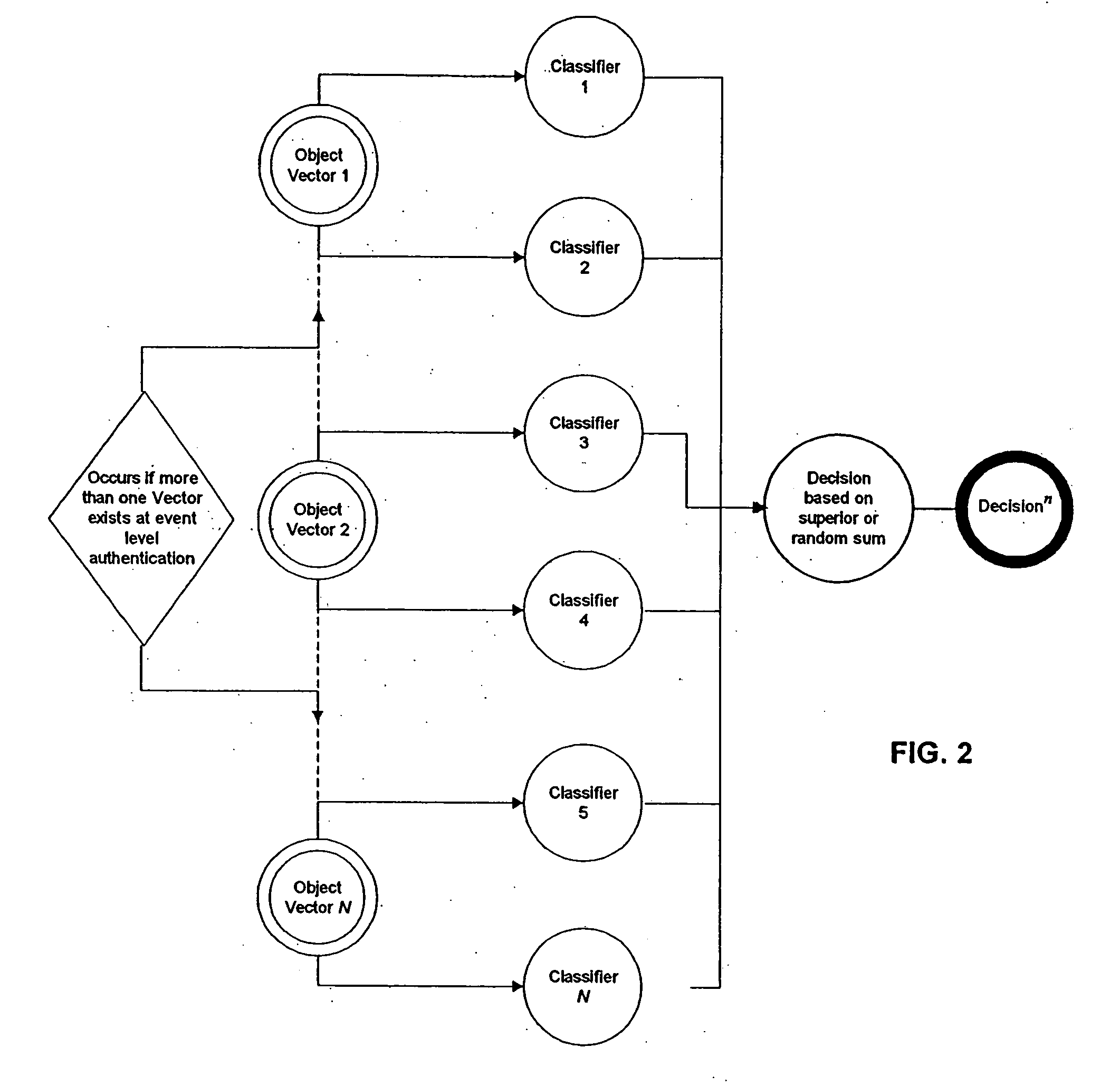Pervasive, user-centric network security enabled by dynamic datagram switch and an on-demand authentication and encryption scheme through mobile intelligent data carriers
a dynamic datagram switch and user-centric technology, applied in the field of digital network communications, can solve the problems of interception of data transactions and loss of network connections, difficult to restore lost connections, and often suffer existing network systems
- Summary
- Abstract
- Description
- Claims
- Application Information
AI Technical Summary
Benefits of technology
Problems solved by technology
Method used
Image
Examples
example 1
Datagram Examples and Specifications of Major and Minor (Sub) Datagram Types
Data Gram Examples
[0152] Instant Message types
[0153] Instant Message
[0154] Remote logging
[0155] Remote data-collection
[0156] Execute remote command
[0157] File Transmission
[0158] Audio-video communication
[0159] EDI transaction
[0160] Broadcast types
[0161] Non real-time point-to-multipoint transmission
[0162] Stock ticker
[0163] Non real-time multipoint-to-multipoint transmission
[0164] Channel-based chat (IRC style)
[0165] Real-time point-to-point transmission
[0166] User-to-user chat
[0167] Audio-video conference (audio or voice telephony)
[0168] Real-time point-to-multipoint transmission (broadcast)
[0169] Audio-video broadcast
[0170] Real-time multipoint-to-multipoint transmission
[0171] Audio-video conference
[0172] User Directory Types
[0173] Query
[0174] Update
[0176] Offline storage
[0177] Server swap area
[0178] Content Filter Control
[0179] Filter status
[0180] Filter statistics
[0181] Filter up...
example 2
Object Vector Based Super Classifier and Biometrics
[0348] Referring to FIG. 2, an object vector super classifier (also referred to as multi classifiers) is shown. More than one data object vectors are used for event-level authentication. The classification decisions may be made based on superior or random sum computed from the data vector objects, including Object Vector 1, 2, and 3 in FIG. 2. Here, each object vector is connected to one or more classifiers from classifiers 1 to N. That is, feature extractions may be made from multiple object vectors and then transformed into a set of classifiers, which collectively constitute a super classifier. Event-specific transformation provides relatively simple distributions that characterize event-based features.
[0349] One example of user authentication using super classifiers involves biometrics. In one embodiment of this disclosure, the super classifier is used in connection with physical biometric measurements, including voice recognitio...
example
[0395] FIG. 2 shows two examples of 1-dimensional density functions for two normally distributed classes. In both examples the Bayes decision surfaces are quadratic, because the variances are different
.sigma..sub.1.sup.2=16, .sigma..sub.2.sup.2=1
[0396] In case one the means are:
.mu..sub.1=15, .mu..sub.2=17
[0397] and in case two:
.mu..sub.1=15, .mu..sub.2=27
[0398] Assuming equal priors, we can determine a decision rule using equation 1.21:
LR(x)=1 Equation: 1.25
[0399] 12 ( 1 2 2- 1 2 1 ) 2 + (2 1 2 1- 22 2 2 ) + 2 2 2 2-2 1 2 1- 2 ln (12 )1 = 0 Equartion : 1.26
[0400] Hence we have the decision rule: 13 Decide { Class 1 if 15.3 18.9 Class 2 otherwise
[0401] The error rate is 14E = 1 2( E 1 + E 2 ) = 1 2( 0.30 + 0.07 ) 18.8 %
[0402] In the linear case we have from 1.22:
LR(x)=1 Equation: 1.27
[0403] 15 =1 2(1 + 2 ) Equation : 1.28
[0404] which leads to the decision rule 16 Decide { Class 1 if 16.0 Class 2 otherwise
[0405] With the error rate (0.40+0.16) / 2.apprxeq.28%. The Quadratic classifier ...
PUM
 Login to View More
Login to View More Abstract
Description
Claims
Application Information
 Login to View More
Login to View More - R&D
- Intellectual Property
- Life Sciences
- Materials
- Tech Scout
- Unparalleled Data Quality
- Higher Quality Content
- 60% Fewer Hallucinations
Browse by: Latest US Patents, China's latest patents, Technical Efficacy Thesaurus, Application Domain, Technology Topic, Popular Technical Reports.
© 2025 PatSnap. All rights reserved.Legal|Privacy policy|Modern Slavery Act Transparency Statement|Sitemap|About US| Contact US: help@patsnap.com



